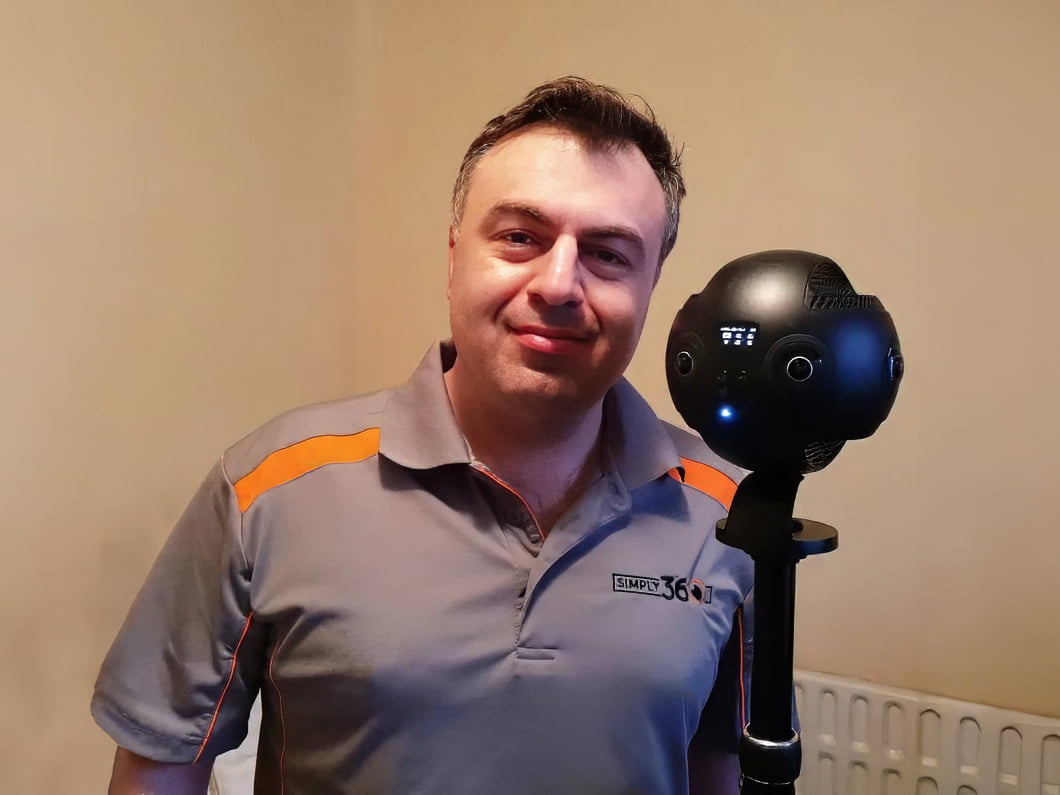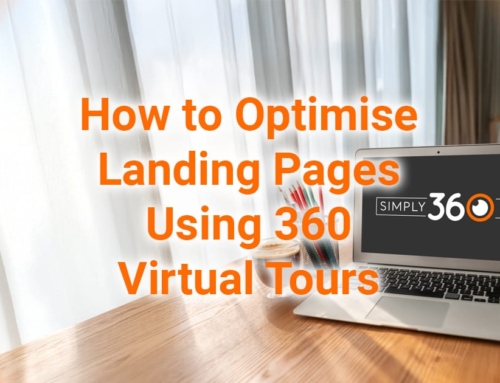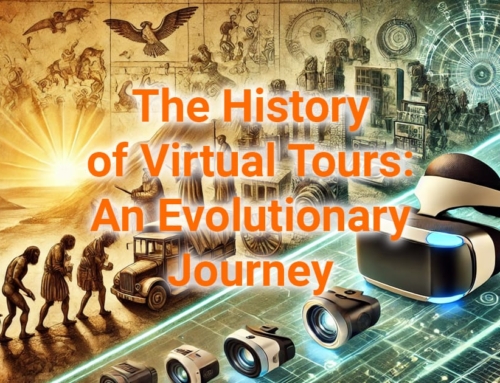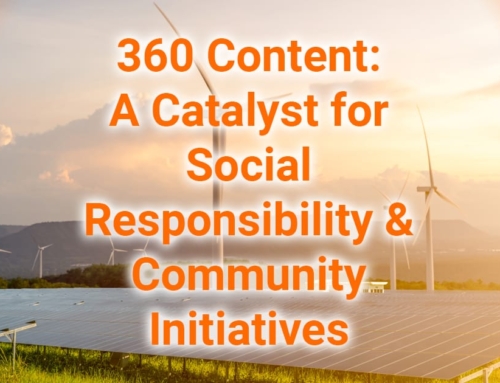In today’s digital age, virtual tours have become a vital tool for businesses and organisations looking to engage with their audience in an interactive and immersive way. The need to cater to a diverse, global audience has never been more crucial as the world becomes increasingly interconnected. Multilingual virtual tours offer a unique solution to bridge language barriers and make virtual experiences accessible to everyone.
Virtual tours have revolutionised how businesses present online spaces, products, and services. These immersive experiences allow potential customers to explore environments as if they were physically present, making them an invaluable asset for marketing, education, tourism, and retail. However, the true potential of virtual tours is unlocked when they become accessible to a global audience through bilingual features. This blog explores how multilingual virtual tours can enhance accessibility, their benefits, and the practical steps for implementing them effectively.
Multilingual Virtual Tours Are A Game Changer

What Are Multilingual Virtual Tours?
Multilingual virtual tours are interactive, 360-degree experiences that allow users to explore a space online, with the added feature of language options. These tours are designed to provide information and navigation in multiple languages, ensuring that non-English speaking users can fully understand and enjoy the content. By selecting their preferred language from a user-friendly interface, visitors can experience the tour in a comfortable and inclusive way.
The core idea behind bilingual virtual tours is to eliminate language barriers that prevent users from fully engaging with the content. Whether a university showcases its campus to prospective international students, a museum provides virtual exhibits to global audiences, or a retail store offers a virtual shopping experience, bilingual tours ensure that everyone, regardless of their native language, can access and appreciate the information presented.
Double-click on the multilingual virtual tour example to make it go fullscreen, or click here
Benefits of Multilingual Virtual Tours
Increased Accessibility for Global Audiences
One of the most significant benefits of multilingual virtual tours is their ability to increase accessibility. Providing content in multiple languages is essential in a world where businesses and organisations cater to diverse populations. Bilingual virtual tours allow users from different linguistic backgrounds to access and engage with the content, breaking down barriers and fostering inclusivity.
By offering virtual tours in various languages, businesses cannot exclude potential customers or clients. This is particularly important for industries like tourism and education, where reaching an international audience is often a key goal. Bilingual virtual tours allow people worldwide to explore destinations, campuses, and attractions without feeling left out due to language limitations.
Enhanced User Experience
User experience is a critical factor in the success of any digital content. When users can navigate and understand a virtual tour in their native language, their overall experience is significantly improved. This leads to higher satisfaction levels, increased engagement, and a greater likelihood of users sharing the tour with others.
Imagine a tourist planning a trip to Australia. Suppose they can explore a virtual tour of a hotel or attraction in their native language. In that case, they are more likely to feel confident and excited about their visit. The same goes for international students considering a university – a multilingual or bilingual virtual tour can provide them with all the information they need in a language they understand, making the decision-making process more accessible and enjoyable.
Broadened Market Reach
Multilingual virtual tours enable businesses to tap into new markets and previously difficult-to-access demographics by breaking down language barriers. This broadens the market reach and opens up new opportunities for growth and expansion. For example, a retail business offering bilingual virtual tours can attract customers from different countries who may need help navigating an English-only website.
In addition to reaching new customers, bilingual virtual tours can strengthen relationships with existing international clients. By showing that they value and respect their audience’s diverse linguistic backgrounds, businesses can build trust and loyalty, which are crucial for long-term success.
How Multilingual Features Improve Accessibility
Examples of Different Languages Available
Multilingual virtual tours typically offer a selection of languages that users can choose from at the start of the tour. This can include major global languages like Spanish, French, Mandarin, and many others. The interface is designed to be intuitive, allowing users to switch languages seamlessly without interrupting their experience.
This feature is invaluable for non-English-speaking users. It makes the tour content understandable and shows that the business values inclusivity and is willing to invest in tools that cater to diverse needs. For example, a virtual tour of a tourist attraction in Sydney might offer options in English, Spanish, Chinese, and German, ensuring that a wide range of visitors can access the information in their preferred language.
User-Friendly Interface for Language Selection
A key aspect of bilingual virtual tours is the ease with which users can select their preferred language. The language selection process should be straightforward and easily accessible, ideally presented as an option at the beginning of the tour or prominently displayed on the main interface.
Once users select their language, the entire virtual tour – including text, audio, and interactive elements – should automatically update to reflect their choice. This seamless transition is crucial for maintaining a positive user experience and ensuring that the multilingual feature enhances accessibility.
Importance for Non-English Speaking Users
Accessing content in their native language can significantly improve the overall experience for non-English-speaking users. It helps them understand the information better and makes them feel more welcomed and valued by the business or organisation providing the virtual tour.
In many cases, non-English speakers may feel excluded or frustrated when they encounter digital content unavailable in their language. By offering bilingual virtual tours, businesses can demonstrate their commitment to inclusivity and ensure that everyone, regardless of their linguistic background, can enjoy and benefit from the virtual experience.
Real-World Applications of Multilingual Virtual Tours
Education
Educational institutions can use bilingual virtual tours to showcase their campuses to prospective students and their families worldwide. By providing information in multiple languages, schools can ensure that all visitors understand the institution’s offerings and unique features.
For example, a university might offer a multilingual virtual tour with information about academic programs, campus facilities, student life, and admission requirements in several languages. This can attract international students and make them feel more confident about choosing the institution for their studies.
Government
Multilingual virtual tours have the potential to revolutionize how government services and facilities are accessed and understood across all levels of governance—local, state, and federal. By providing these tours in multiple languages, government agencies can enhance accessibility and ensure that non-English-speaking residents and visitors are fully informed and able to participate in civic life.
At the local council level, multilingual virtual tours can guide residents through essential services such as waste management, public libraries, community centres, and local parks. These tours can help residents navigate processes like applying for permits, attending council meetings, or understanding local bylaws, all in their preferred language. This inclusivity fosters greater community engagement and ensures that all residents, regardless of their language background, can access the services and amenities their local council provides.
On a state level, multilingual virtual tours can showcase public institutions such as state parliaments, museums, and historical sites. They can also assist in explaining state-level services like health, education, and transport. For example, a virtual tour of a state hospital could guide patients through the various departments and services, explaining procedures in multiple languages, which is invaluable in diverse, multicultural communities. These tours help bridge language barriers and ensure everyone can access the information they need about state resources and services.
At the federal level, multilingual virtual tours can foster transparency and inclusivity in national institutions. These tours can provide insights into federal government buildings, such as Parliament House, or explain complex federal services like immigration, taxation, and social security. By offering these tours in various languages, the federal government can ensure that all citizens and residents, regardless of their language proficiency, clearly understand their rights, responsibilities, and the services available to them. This promotes greater civic engagement and strengthens trust between the government and the diverse communities it serves.
Tourism
Tourism boards and travel agencies can leverage multilingual virtual tours to promote destinations to international travellers. Tourists can explore landmarks, hotels, and attractions in their native language, making planning more enjoyable and less stressful.
For instance, a virtual tour of a popular tourist destination in Sydney might include descriptions of key attractions, historical information, and practical details like opening hours and ticket prices in multiple languages. This can help tourists feel more informed and excited about their visit, boosting tourism and local businesses.
Retail
Retail businesses can use multilingual virtual tours to enhance the shopping experience for international customers. By offering tours in various languages, retailers can guide shoppers through their stores, highlight products, and provide detailed information that can increase sales and customer satisfaction.
Technical Aspects of Implementing Multilingual Virtual Tours
Implementing bilingual virtual tours involves integrating language translation features into the virtual tour platform. This can be achieved through automated translation tools and human translators to ensure accuracy and cultural relevance.
Content Translation
The first step in creating a multilingual virtual tour is translating all the text and audio content. This includes descriptions, labels, narration, and any interactive elements. While automated translation tools can be helpful for initial translations, human translators must review and refine the content to ensure it is accurate and culturally appropriate.
While automated computer translations provide a basic understanding of the text, human translators can ensure that idiomatic expressions, technical terms, and cultural nuances are correctly conveyed. This level of accuracy is crucial for providing users with a seamless and authentic experience.
Testing and Quality Assurance
Ensuring the translated content is accurate, and the interface functions smoothly across all languages is essential for a successful multilingual virtual tour. This involves rigorous testing and quality assurance to identify and fix any issues that might arise.
For example, testing should include:
- Checking for any translation errors.
- Ensuring that all text fits appropriately within the interface.
- Verifying that the audio and interactive elements function correctly in each language.
Additionally, user feedback can be invaluable for identifying areas for improvement and ensuring that the final product meets the target audience’s needs.
Marketing and Engagement Benefits
Bilingual virtual tours enhance user experience and provide significant marketing benefits. By making virtual tours accessible in multiple languages, businesses can improve their SEO and online visibility, as search engines often favour content that caters to a broader audience.
Improved Engagement Metrics
Bilingual tours can lead to increased engagement metrics such as longer visit durations, higher interaction rates, and more shares on social media. This heightened engagement can translate into better brand recognition and loyalty.
For example, a museum offering a multilingual virtual tour might find that visitors spend more time exploring the exhibits, share the tour with friends and family, and leave positive reviews online. This increased engagement can attract more visitors and enhance the museum’s reputation.
Impact on SEO and Online Visibility
Offering content in multiple languages can also improve a business’s SEO performance. Search engines often favour websites that provide content for a broader audience, and multilingual virtual tours can help companies rank higher in search results for various languages.
For instance, a travel agency offering multilingual virtual tours might find that its website ranks higher for search queries in different languages, leading to increased traffic and more potential customers. This improved visibility can help businesses reach a wider audience and achieve their marketing goals.
Conclusion
Incorporating multilingual features into virtual tours is a powerful way to bridge language barriers and make digital experiences more inclusive and engaging. By enhancing accessibility and broadening market reach, bilingual virtual tours can substantially benefit businesses across various industries.
To explore how multilingual virtual tours can transform your business, contact Simply 360 on 02 9674 9090 or send us an email.
Have you ever used a multilingual virtual tour before? How did it enhance your experience? What languages would you like to see included in more virtual tours? Join the discussion in the comments section below!








Leave A Comment